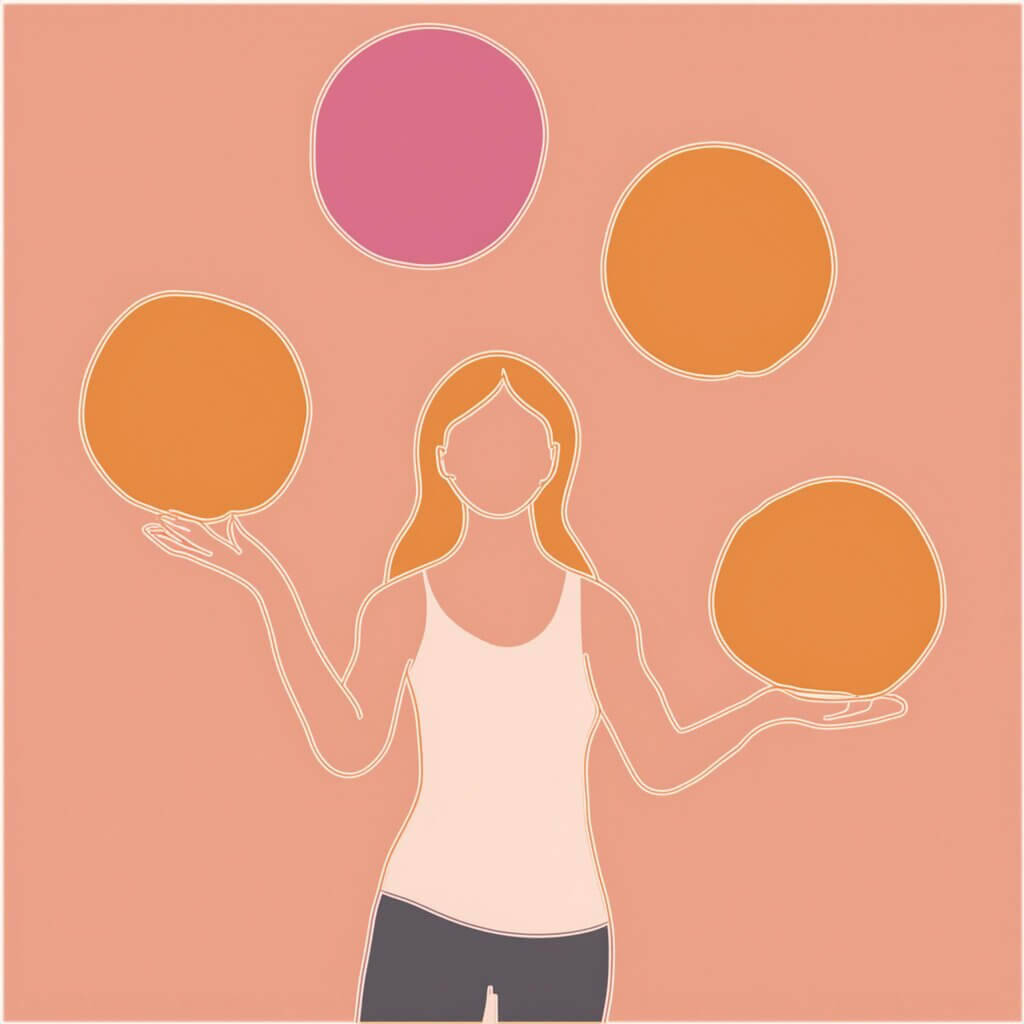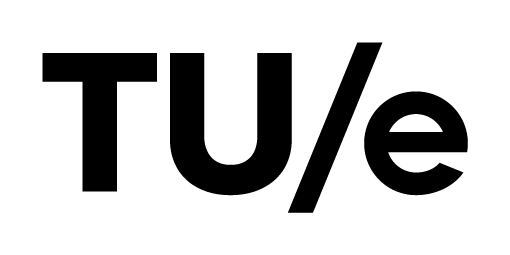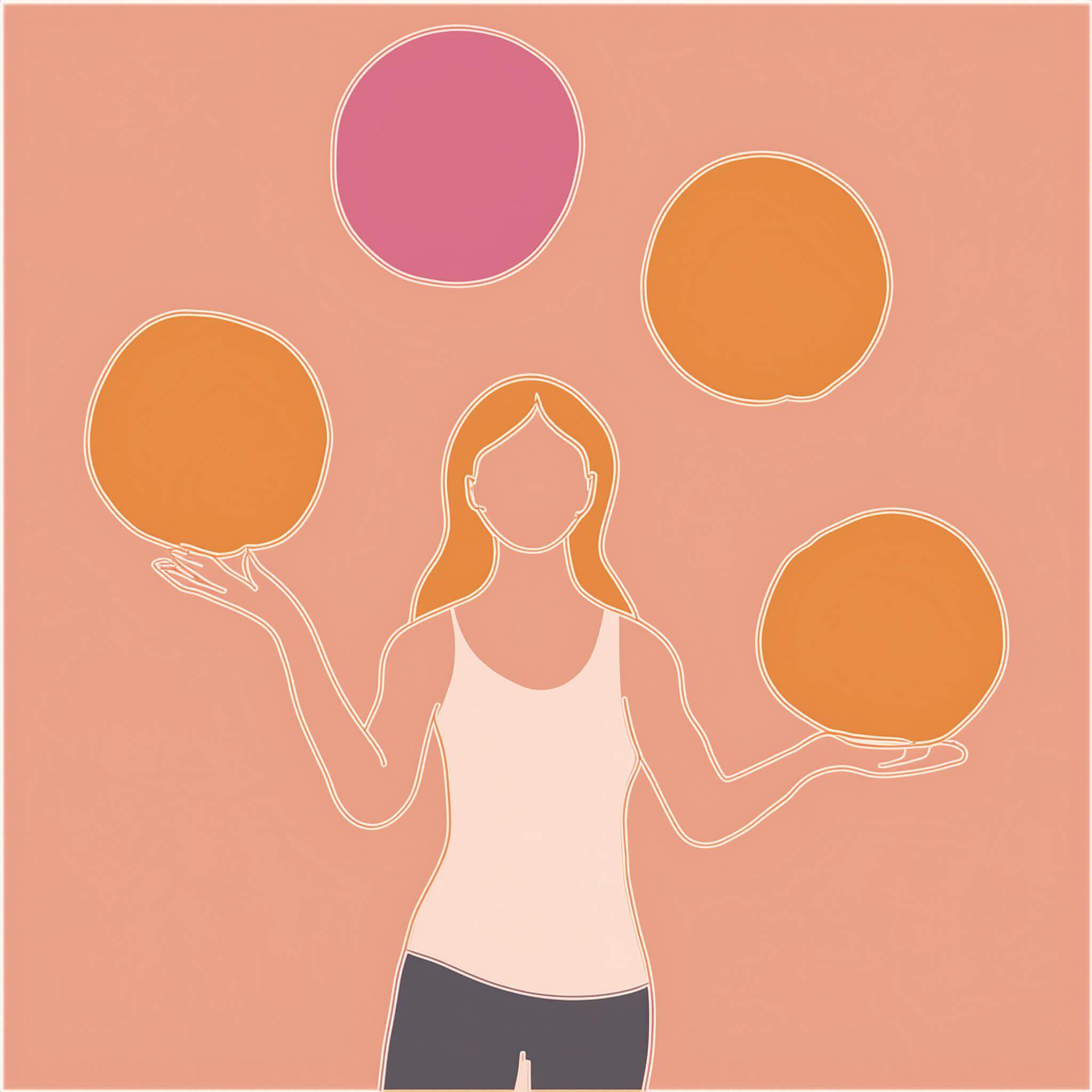
In today’s fast-paced world, it often feels like we’re constantly juggling a lot of tasks, each demanding our attention like balls in the air. Through the years we can see a shift from handling just a few big tasks during the day to trying to uphold a lot of small tasks that all require our attention. From household chores like doing the dishes to keeping up with social media notifications, our days are filled with a never-ending stream of stimuli that have made us addicted to consuming dopamine.
This phenomenon is a trend that we can see happening from over the years. We used to start our daily lives with a few big tasks that needed to be done during the day, like providing food, cleaning the house and watching the kids. Through technological development and societal change, many innovations like the washing machine, the supermarket, transportation with a car, a vacuum cleaner, and daycare for your kids have made doing these tasks so much easier and more time efficient that we don’t have to spend hours on them individually. However, they do still require our attention, maybe even more demanding than before.
This metaphor of juggling many small stimuli at the same time isn’t just limited to how we work and play; it influences every aspect of our existence, including how we relax. The trend of more efficiency in tasks can also be seen in consuming more dopamine in a more efficient way. We find ourselves striving to do more in less time, fueled by the belief that this equals success. In this blog post, I’ll talk about how our pursuit of stimuli and dopamine impacts our relaxation and the way we unwind in an increasingly hyper-stimulated world.
Changing Relaxation
After you have been staring at your screen for hours you decide it’s time for a brake from the laptop while working at home. Your dog happily follows you as soon as you stand up to grab your shoes. With a walk around the park, you can get some fresh air and walk the dog. You grab your headphones from the table to listen to your podcast and take an apple from the fruit bowl so you can eat on the way. Oh and while you’re walking that direction you might as well drop off the borrowed jacket from your friend. Finally, some time to relax…
As our lives become increasingly driven by more and more dopamine, it’s no surprise that this also includes our relaxation. Although the intention to unwind and recharge from our daily busy lives is good, we have become so addicted to high levels of dopamine that we no longer know how to calmly relax. Instead, our relaxation time has become overstimulating and we find ourselves multitasking to use our breaks in the most efficient ways. Our craving for dopamine is mirrored in the time we should be using to take a rest from craving.
As we continue down this path of endless stimulation, it’s possible to imagine a future where our relaxation time might become even more extremely efficient and dopamine-driven. The tasks we’re juggling just become smaller but we take on even more than we already do. Since design follows the cravings of the consumer, we can expect this pursuit for more efficiency to come closer and closer towards our personal lives. Picture a world where AI-powered robots take over our daily tasks like grocery shopping or cleaning. This would save us hours, allowing us to engage in multiple activities simultaneously which means more time to relax right? But what if these robots could also maintain your garden perfectly and paint you the perfect painting for in your living room? Now you don’t only have to restrict yourself to practising gardening and painting as a hobby but could have 5 or 6 hobbies all at the same time!
Although these scenarios are of course very futuristic, it is important to pause and reflect on our pursuit of dopamine and our need for relaxation. Are we truly taking a break from all the stimulating tasks we need to juggle or are we just looking for quick and efficient relief from the demands of our dopamine-driven world? During Researching the Future Everyday I will be working in a team on the theme of Challenging Consumerism by Design (Lenneke, 2024). Our focus is on the consumerism of dopamine in the act of relaxation. What extreme scenarios can we bring to life to pinch people that we’ve become stuck in the search for more and more dopamine to fulfil our lives? This topic is both a warning for our endless drive to consume more and more but also a reality check for designers to realize down which path we might be going. We must navigate a balance between striving for efficiency with innovation and setting our priorities with genuine rest that is truly restorative.
References
- Lenneke. (2024, 23 April). 2024 Theme 3: Challenging consumerism by design – TU/e Researching the Future Everyday. https://rtfe.imaginari.es/2024/04/23/theme3-2/
- Picture created with Adobe Firefly Model Image. (2024, 21 May) https://firefly.adobe.com/inspire/images


